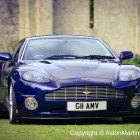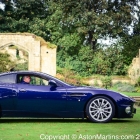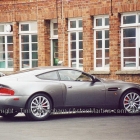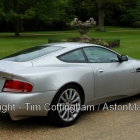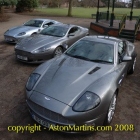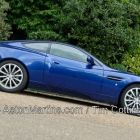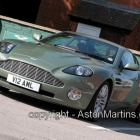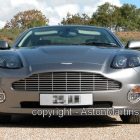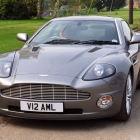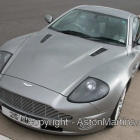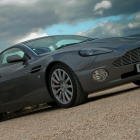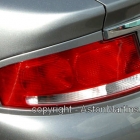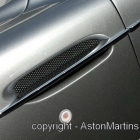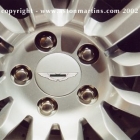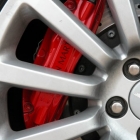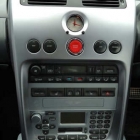The V12 Vanquish was not only the most advanced Aston Martin of it’s time – it was a quantum leap from the previous V8 powered cars. Designed by Ian Callum, who also was responsible for the DB7; the V12 Vanquish remained extremely faithful to the Project Vantage although every panel is subtly different. It’s 6.0 litre V12 engine was developed from that already available in the DB7 Vantage with new design inlet manifolds, camshafts, valve gear, crankshaft and exhaust system. Power had been tweaked up to 460bhp giving a top speed of 190mph and acceleration to 60mph in 4.7 seconds.
The six speed manual transmission is linked to the electronic drive-by-wire throttle and controlled through F1 style twin paddles mounted on the steering column so that a clutch pedal is not needed. Developed in conjunction with Magnetti-Marelli and Ford RVT, the advanced paddle shift gear change incorporated electronics matched to hydraulics which enabled almost imperceptible gear changes in just 250 milliseconds. Some journalists at the time were critical of the V12 Vanquish ‘flappy-paddle’ gear-shift yet many enthusiasts still love it. For those who do not, Works offered a conversion to ‘stick shift’ which has seen a reasonable take up.
The main body structure was formed from extruded aluminium sections bonded and riveted around a central transmission tunnel constructed entirely from carbon fibre. All the exterior panels were produced from ‘super-formed’ aluminium, tailored and bonded to the central structure by hand for a perfect fit. Whilst eight Connolly hides were still needed (later replaced by Bridge of Weir following the demise of Connolly), wood trim was initially banished from the car. But of course, Works Service will now enhance the V12 Vanquish with a choice of three walnuts or genuine carbon fibre panels. Unusually, the car could be specified as a two seater with load space (known as 2+0) or, for an additional £5000, as a 2+2, although the rear seats are nothing like as generous as those in the previous V8 models.
Initial demand for the £158,000 V12 Vanquish was astonishing, far greater than any previous model ever made at Newport Pagnell; AML initially claimed that the first three years production had already been sold shortly after the model introduction. Planned production was expected to be about 300 per year, although output started at around 500 a year. The 1000th production V12 Vanquish was delivered to it’s Japanese owner during the July of 2003. I visited Newport Pagnell twice during 2002 and three times in 2003 and the factory was a hive of activity. A majority of the cars in production at that time were one of the many silver or grey hues but I’ve also seen cars in British Racing Green, black, dark metallic blue, light metallic green and metallic ruby red.
In total, 1,503 V12 Vanquish were build before the standard car was replaced by the more powerful V12 Vanquish S in 2004













